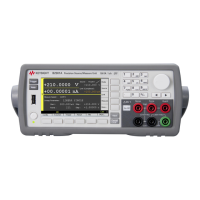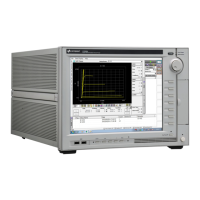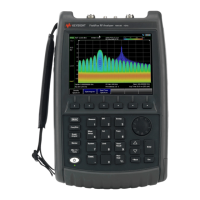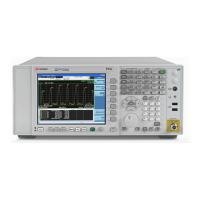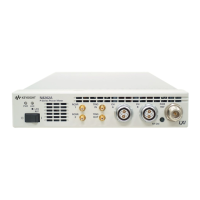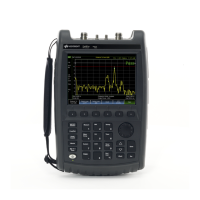6-18 Keysight B2900 User’s Guide, Edition 5
Function Details
Math Expression
This function is effective for reducing measurement errors in low resistance
measurements.
VARALPHA Calculates varistor alpha using the following formula.
VARALPHA = log(CURR[c][1] / CURR[c][0]) / log(VOLT[c][1] / VOLT[c][0])
where, CURR[c][0] and VOLT[c][0] are the measurement data at a point on a
varistor’s non-linear I-V characteristics curve, and CURR[c][1] and VOLT[c][1] are
the data at the another point.
VOLTCOEF Calculates voltage coefficient using the following formula.
VOLTCOEF = (RES[c][1]-RES[c][0]) / (RES[c][1] * (VOLT[c][1]-VOLT[c][0]))
* 100 %
where, RES[c][0] and RES[c][1] are the resistance measurement data at the first and
second measurement points, respectively, and VOLT[c][0] and VOLT[c][1] are the
voltage measurement data at the first and second measurement points, respectively.
The voltage coefficient is known as the ratio of the fractional change for a resistor
whose resistance varies with voltage.
Resources Used in the Expressions
The following resources can be used in user-defined math expressions.
• Reserved variables
The variables listed in Table 6-2 are reserved for reading the channel output or
measurement data.
Scalar variable is used for spot measurement data.
Vector (array) variable is used for sweep measurement data.
• Math operators
The following operators are available.
• Arithmetic operators: +, -, *, /, ^, see Table 6-3
• Elementary functions: ln, log, sin, cos, tan, exp
The functions log and ln perform the operation after calculating the absolute
value. So if a negative value is specified, they do not cause an error but calculate
as a positive value. For example, log(-10) results in log(10)=1.

